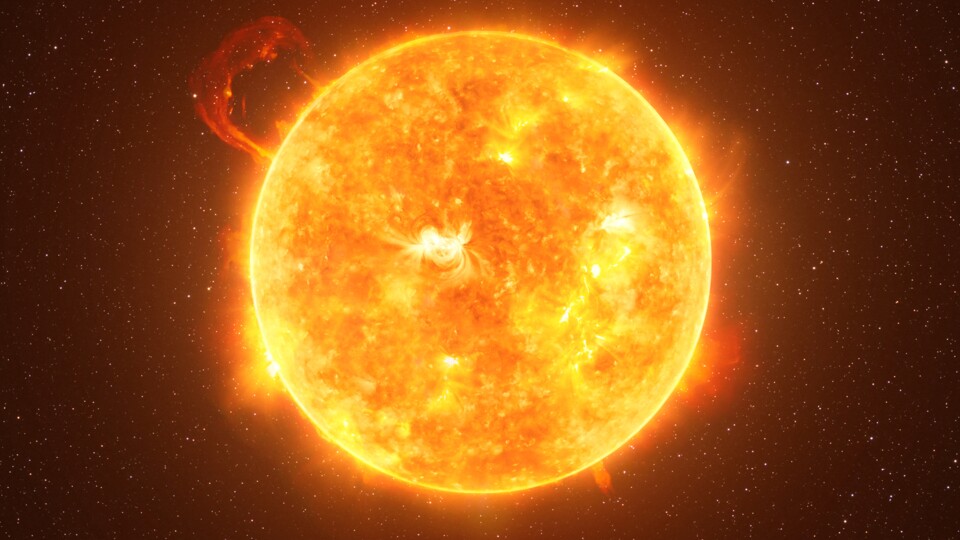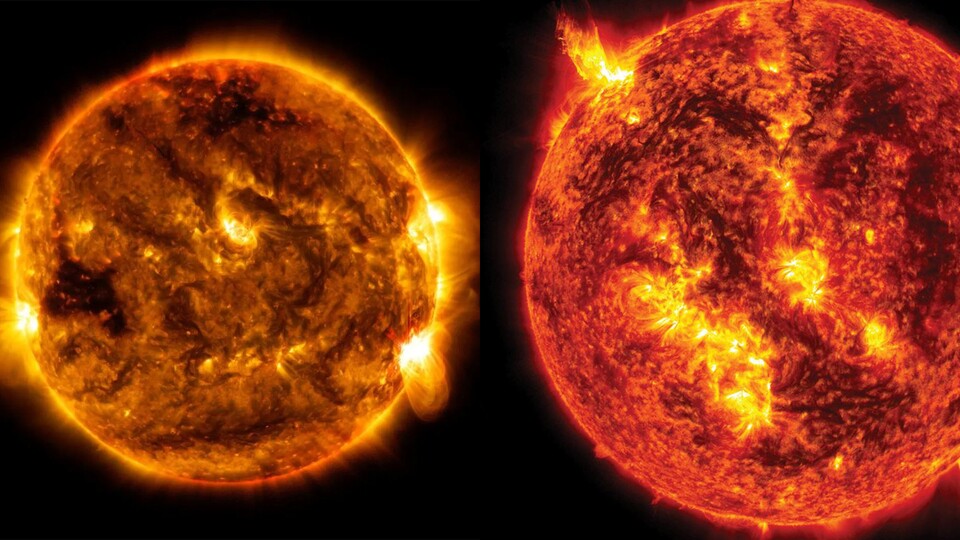
The sun: It gives life – but one must not forget its destructive power! (Source: lukszczepanski/Adobe Stock)
Advertisement
The sun is the engine of our system. It is billions of years old and yet we still know very little about it. In 2024 there will be another (literally) exciting event that occurs in cycles every 11 years: the poles of the sun will reverse.
According to the results of a new study This should happen by September of this year at the latest. Until then the sun will be very active. But why should we care about such an event on far away earth?
High solar activity could (destroy) our technology
In fact, the sun is more active than it has been in about 20 years.
Paul Charbonneau, a solar physicist at the University of Montreal, tells the magazine Vox. Now the question naturally arises as to how much we are affected by such a distant phenomenon – the answer to that is not that simple.
Advertisement


Two impressive images from NASA of our sun. Visible on it: turbulences, coronal ejections and sunspots (Source: NASA/SDO)
The problem: The cycle of pole reversal culminates in particularly strong activity. To put it simply, this can be seen in advance for us in increasingly larger and more intense sunspots.
As direct consequence This increased solar activity ultimately leads to strong solar flares and coronal mass ejections – and these are a problem for us!
Coronal mass ejections: The sun's plasma and charged particles are ejected into space at speeds of several hundred thousand kilometers per hour, which is what we ultimately call a solar storm.
An active sun means increased solar storms. These repeatedly cause incidents such as 2022, where a solar storm destroyed dozens of Elon Musk's satellites in one fell swoop.
They can reach Earth in typically three days.
This is what Delores Knipp, professor of aerospace engineering at the University of Colorado Boulder, told Vox.
Direct consequences for our earth: With a bit of bad luck, a particularly strong solar storm is heading our way. Depending on the intensity, some of the charged storm particles could break through our Van Allen belt (explanation follows in the third paragraph) and rain down on our Earth.
A list of possible consequences:
- Large-scale blackouts: The particles disrupt large areas of our electricity
- Satellites: They are helpless against the storm and can be destroyed
- Electronic devices: They can be destroyed by strong storms
- climate: Strong storms may have minimal impact on our climate, but it could be another drop in the bucket
Sunspots: This is what they reveal about the condition of our sun
The sun's activity is both a blessing and a curse. Without sunlight there would be no life on our planet. But their storms endanger us equally and cannot be predicted, even after centuries of research.
You can see how you can imagine this in this time-lapse video:
Link to YouTube content
This is how sunspots are formed
What we know for sure: To put it simply, the sun is a giant fusion reactor. At its core, the sun fuses hydrogen atoms to form helium, releasing an enormous amount of energy.
Outside this core there is a layer called convective zone referred to as. There, gas is heated so much by the heat of the sun that it acquires an electrical charge. It is simply said to plasma.
Similar to terrestrial oceans, this plasma flows on the sun's surface, with warmer plasma rising and colder plasma descending.
We believe that these currents are responsible for generating powerful electrical currents. And when you generate currents, magnetic fields are also created.
This is what Nour Rawafi, astrophysicist at the Johns Hopkins Applied Physics Laboratory, says in an interview with Vox.
Pretty crazy: Science calls this process a solar dynamo. However, the exact functionality is still not fully understood. The result:
When the flows of plasma and magnetism inside the Sun become unstable, they jump through the surface, and the magnetic fields are so strong that they appear as dark spots.
Scott McIntosh, solar physicist and deputy director of the National Center for Atmospheric Research told Vox
Sunspots are essentially magnetic pot lids: These areas of magnetism act like a cover to the light and heat of the sun. According to McIntosh, they look dark and cold in a telescope, although that is to be understood relatively.
These areas are still there 6,500 degrees hot – a little cooler than the 10,000 degree hot surface of the sun.
This is how our earth protects us until the horror is over
After the sun builds up ever greater magnetic activity, it culminates in the said pole reversal and decreases – until the cycle repeats itself again after 11 years. Until then we are still exposed to the storms.
However, our earth has a natural protective shield as an ace up its sleeve: the so-called Van Allen Belt! In short, this shields our earth and allows a large proportion of the charged particles to bounce off. In addition, another part burns up in our atmosphere.
Depending on the intensity of the solar storm, particles can break through and cause the damage mentioned above. While we shouldn't worry unnecessarily, we should remember that we still know very little about what is happening around us. Until the pole turns around again, things will remain exciting – or at best not.
Did you know about the magnetic reversal on the sun and why exactly spots appear on the sun? What do you think about solar storms and their impact on our fragile, modern world full of electronics and global satellite communications? Do you know of any projects or ideas from scientists on how we can protect ourselves from such storms? Feel free to write us your thoughts in the comments and exchange ideas.